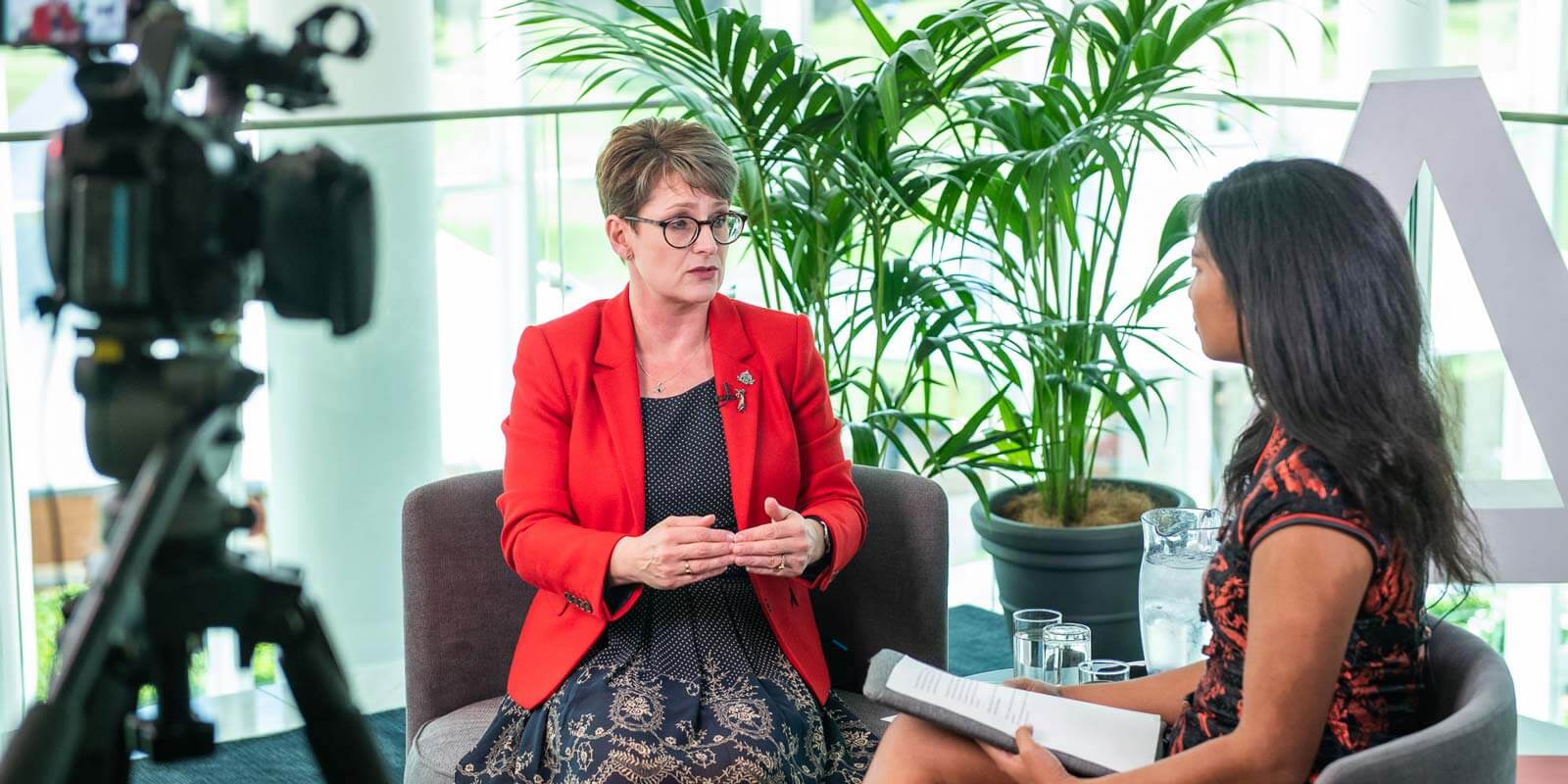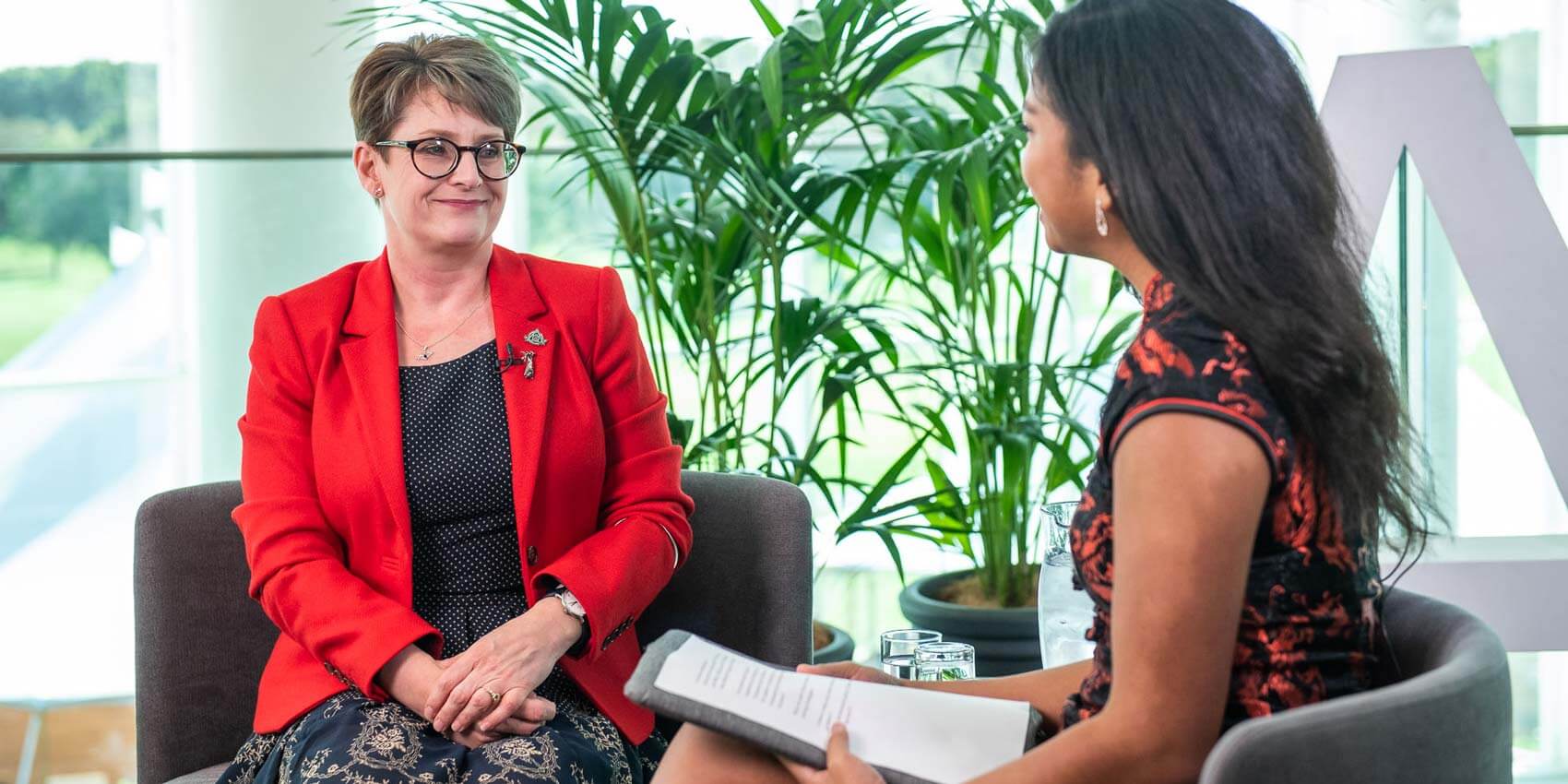Dr Theresa (Simpkin) is an industry focussed academic, researcher, consultant and public speaker. Her work on skills and labour challenges has been drawn upon by State and Federal Governments in Australia and she has collaborated widely with industry associations, educational institutions and enterprises around the world and across industrial sectors.
In a conversation with ADAPT’s Justina Uy on the Core Competency of Empowering the Workforce at ADAPT’s CCDC Edge, Terri shares her education-based perspective on the skills shortage, practical ways of empowering by distributing power, and technology-based solutions to achieve this.
Justina Uy:
Terry, you were named one of the 50 most influential women in the data economy, due to your work in advising all kinds of organisations, industry, corporate, SMEs, so, what are the kind of common productivity challenges across all of these different kinds of organisations?
Terri Simpkin:
I think at a very basic level, I think access to the capabilities that we need now, and not just now but into the future. There is in tech generally, but of course, in the digital infrastructure space, a raft of different competing issues going on in terms of skill shortages. So, we’ve got skill shortages, we’ve got labour shortages, we’ve got employer branding issues, nobody actually knows that we’re here.
In terms of productivity, finding the right people with the right capabilities today, and also with changing demands of what’s going on in our industry, what’s getting the capabilities right for the next few years is a real issue.”
We know that about 78% of organisations are experiencing skill shortages and we know that those skill shortages are perhaps going on for, between four to six months, about 10% of those people who are experiencing those sorts of shortages are actually going beyond six months to fill a role. So, the productivity of an organisation who can’t find the right people with the right set of skills is obviously going to be impacted.
Justina Uy:
ADAPT’s identified empowering the workforce as one of its 12 Core Competencies, for leaders to develop when transforming their organisations. What does that mean to you?
Terri Simpkin:
Well, if you look at what empowerment is, it’s about distributing power, and our organisations traditionally have valued hoarding of power.
So, the people with power want to hang on to it, and if you give your power away to somebody else to give them agency, to encourage them to make their own decisions, and perhaps be more innovative, perhaps take some risks, often it’s seen as giving away some of my power, when in fact, giving people power to make those decisions, whether it be about funding, whether it be about coming up with new products, whether it be about different working styles, is often quite challenging. But rather than seeing it as a zero-sum proposition, I give my power away to you, therefore, I’m diminished, we need to see it as what it is.
Empowerment is about providing more power to more people, in order to bring value, not only to the organisation, but to the individuals themselves as well.”

Justina Uy:
So, in your experience of attempting to erode this kind of command and control sort of hierarchy, what are your tried and tested ways of achieving that?
Terri Simpkin:
I think it’s cultural. We often say that these sorts of behaviours, these sorts of ways of working have to come from leadership, and of course, that’s challenging traditional notions of leadership. We’re seeing a demand for, as I said, more distributed ways of leading and managing organisations, so that organisations are much more flat, they’re much more flexible, they’re much more open to risk in innovation. But it has to be cultural. We often think that we can train our way out of this, we can train people to be empowered or to take the power that they’re given, but it has to be supported by systems and processes in the organisation.
Quite often, we expect people to be empowered and to use that power, but the systems and processes and the ways that business works are often still in a command and control paradigm.”
So, making that shift is absolutely key. It’s critical. You have to have personal development as well as organisational development, and without having, if you got one without the other, then it’s very difficult to actually reap the benefits of having an empowered workforce.
Justina Uy:
Is there a place for this that technology can provide a solution?
Terri Simpkin:
Yes, yes, there is. I mean, we’re seeing a whole raft of technologies that are stripping out, bias through recruitment selection and performance management and those sorts of things, but we also know that technologies infused particularly, artificial intelligence, for example, is infused with algorithm bias. So, if you’ve come from a workforce that is perhaps less than, they’re less diverse than it should be, there are parts running with some assumptions that are not necessarily correct for certain contexts, then you’re going to have technology that is perpetuating bias and discrimination.
So, it’s a bit of a chicken in the egg situation. We need to have more diverse voices going into the development of AI, in order then for us to be able to use AI to diminish bias discrimination and traditional ways of thinking. But certainly, there’s a place for tech. I mean, technology can be a great leveller, if it’s used wisely.






























